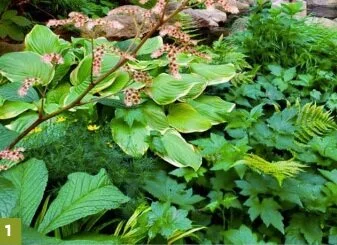If you pop your head into the courtyard on 53rd street, a lush interior garden shared by 86 units of affordable housing in Midtown Manhattan, you are likely to find Ursula parked in her wheelchair amidst the flowers and sunshine. Ursula was flooded out of her home during Hurricane Sandy and had to relocate to 53rd street. She spends many of her days in the shared garden below her apartment, often with her latest knitting project in her lap or her painting kit. She meets friends for tea or visits with her son when he stops by. We asked her why the garden is so important to her, and she said ‘It is a magic place!’.
We have been designing and maintaining horticulturally exceptional and long-lasting gardens for lower income New Yorkers for over a decade. By designing and maintaining dozens of properties over the years we have come to deeply understand the importance of green spaces as a human right and a profoundly needed resource for sanctuary and peace.
The relationship between humans and the natural world is essential for individual health and the strength of communities. We are excited now that science has proven this to be true as we’ve always known. We know that the trees are talking to each other, that they are sharing resources and caring for each other in times of danger. We know that we can learn so much from them! Numerous studies have shown us that the proximity to trees, to gardens and to open space has far reaching and deeply essential benefits to our physical and mental health.
As New York City weather the Covid shutdown last year we saw a glimpse into how privilege and wealth effect our access to gardens and our relationship to land. Many wealthier New Yorkers endured quarantine in homes boasting green space or more often moved out of the city completely to country homes and family properties. While lower income New Yonkers existed between four small walls often without even access to public open space. Can we please take a moment right now to fully understand this great disparity and how drastically different these two realities are? And the very real ramifications this has on people’s lives, health, and futures.
Steven has been a resident of 53rd street for over 10 years. In the past, Steven struggled with substance abuse and lost his apartment. He experienced homelessness and lived in and out of shelters and halfway homes for a time. He told us that his move to 53rd street was ‘life changing’ and that for the past decade he has had a real HOME. If you are looking for Steven, you can often find him sitting under the grove of Dawn Redwoods in the courtyard watching the goldfish swimming in the babbling stream. Steven loves meeting up with his neighbors for a chat in the garden and is known to take a lot of photos of the fish.
In creating these gardens, we use predominately perennial and woody plantings with the goal of long term beautiful for years and year without a ton of intervention and annual additions. We use natives not exclusively but predominantly. Some of our favorite plants in this work include: Cotinus, Ilex glabra, Hydrangea paniculata, Hamamelis, Clethra, Amelanchier, Agastache, Solidago, Asclepias, Anemone and so many more!
As we continue to live through climate change, we are expecting to experience more and more frequent emergencies. Climate change and the growing crises will affect all of us, but it will ALWAYS continue to affect historically oppressed populations disproportionally just the way Covid has shown us. At this moment it is time to gather all our resources and build strong and equitable communities in any way we know how. This means housing rights, racial equity, voting rights, refugee/immigration work, food & farming… all of it becomes climate justice work and how we bolster and strengthen our communities, so they are able to survive the pressures and stresses of our climate future. And yes, gardens too. We view gardens as an ancient way to transform stress and heal trauma as well as an essential resource for the resiliency of our future communities. I know we will continue to connect as many people as possible to the magic healing properties of gardens, plants, and the build lasting connections to the land. But we will also need all of you AND all our plant family members as allies moving forward into the arriving future.
On a sunny spring afternoon, as we prepare to move on to the next site, Ursula waves from her shady corner where she is hosting some friends for tea. She tells us excitedly that one of her paintings she’s made of the garden has made it into a gallery show. We can’t wait to go see!
— Shanti Nagel & Meral Marino







